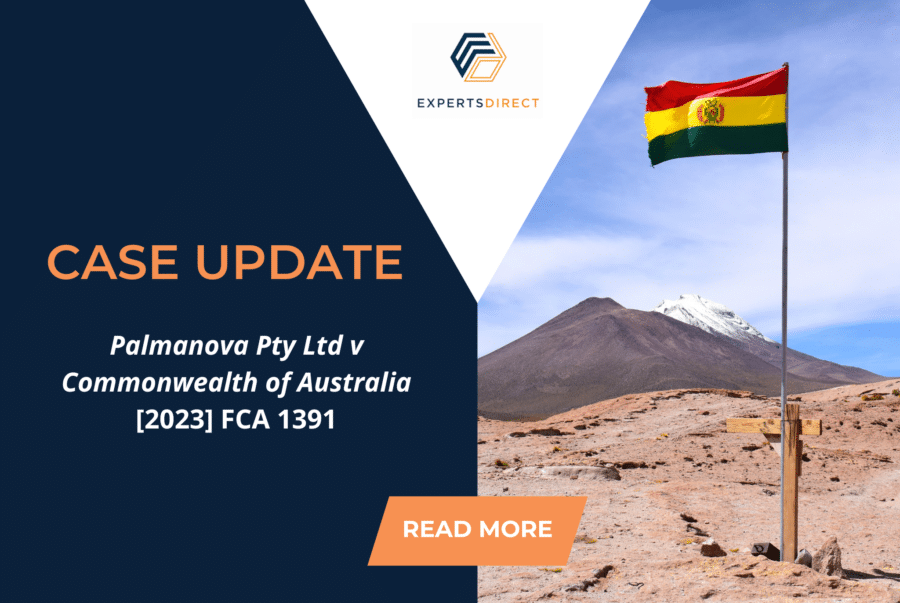Palmanova Pty Ltd v Commonwealth of Australia [2023] FCA 1391
In this case, an expert’s report was challenged on the basis she did not have a significant depth of personal experience in the identification of artefacts, and for having searched Twitter for information relevant to the preparation of her report.
Background
An archaeological artefact made from black basalt was purchased online by the Applicant, an Australian company, from a gallery in the United States. Documentation accompanying the artefact suggested that it was pre-Columbian in origin and came from Tiwanaku, an ancient city, the monumental ruins of which lie in Bolivia near Lake Titicaca.
Upon its entry into Melbourne, the artefact was intercepted and retained by officials acting under the Customs Act 1901 (Cth). The Commonwealth Office for the Arts considered whether the artefact should be seized under s 34 of the Protection of Movable Cultural Heritage Act 1986 (Cth) on the basis that it was ‘a protected object that the inspector believes on reasonable grounds to be forfeited’.
Expert evidence
To provide opinion on matters of archaeology and cultural and art history, the Commonwealth called a number of experts, including Dr Y and Dr V. All experts (including the expert called by the Applicant) gave evidence on issues as to the provenance of the artefact, and the circumstances and timing of its removal from the territorial confines of modern day Bolivia.
The Applicant made several challenges to the evidence of Dr Y, who had provided both a report and a supplementary report. In her opinion, the artefact had been made at Tiwanaku by the Tiwanaku.
The Applicant was critical of Dr Y’s evidence for three reasons:
- She did not have significant depth of personal experience in the identification of Tiwanaku artefacts.
- In relation to significant issues, Dr Y simply adopted other analyses provided to her by the Commonwealth.
- Dr Y’s expertise was not the result of deep research and long-standing knowledge, but rather had been acquired more recently through research and crowd-sourcing information.
The court found while Dr Y deferred to the views of Dr V, this did not signify that she lacked significant expertise herself. The court was satisfied that the sections of Dr Y’s report which addressed significant issues showed that she had independently evaluated the claims made in the Commonwealth’s analyses before discussing their significance.
During Dr Y’s oral evidence, she explained her research methodology which included “finally getting around to reading a whole book on experimental archaeology related to the creation of Tiwanaku stonework” and searching Twitter (as it was then known) to see if she could find a feline head with its nostrils set back from its teeth, in line with the topic on the location of the nostrils on the feline of the artefact.
Perram J also rejected criticisms that Dr Y’s expertise had only been recently acquired, or that she lacked the necessary expertise. It was held that a close examination of the iconography and provenance of the artefact could involve consulting other works, and it would be implausible to think that any of the experts carried around in their heads the details both as to form and source of every Tiwanaku object. In seeking to “crowd-source” information by searching Twitter, the court found that while this was a modern approach, it did not show that Dr Y was not an expert.
Overall, the challenges to Dr Y’s expertise were all rejected by the court. The artefact was ruled to be part of the movable cultural heritage of Bolivia and was found to have been removed unlawfully from Bolivia at some time no later than the 1950s. However, the artefact was not liable to forfeiture under s 14 of the Protection of Movable Cultural Heritage Act 1986 (Cth).
Key takeaways
- An expert may defer to the views of another expert if the first expert demonstrates that they have independently evaluated the views of the second expert.
- Evidence that an expert’s opinion is partly based on recent reading and research will not necessarily mean that the expert’s specialised knowledge has only been recently acquired or that they lack the necessary expertise.
- Undertaking searches of platforms that facilitate crowd-sourced information such as Twitter, is a modern form of research and may not necessarily mean that the methodology of an expert who uses such platforms is flawed.
Read the full article here.
